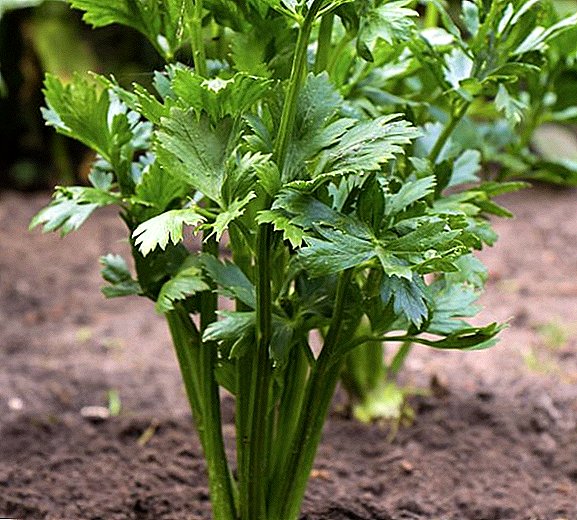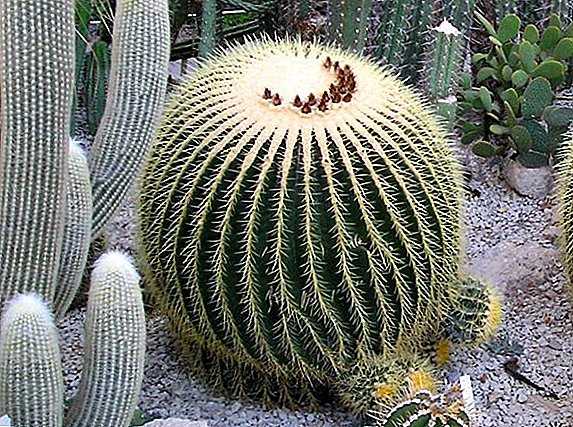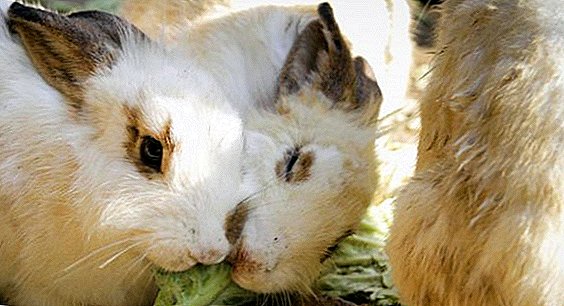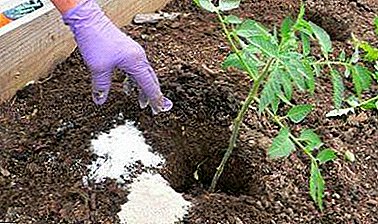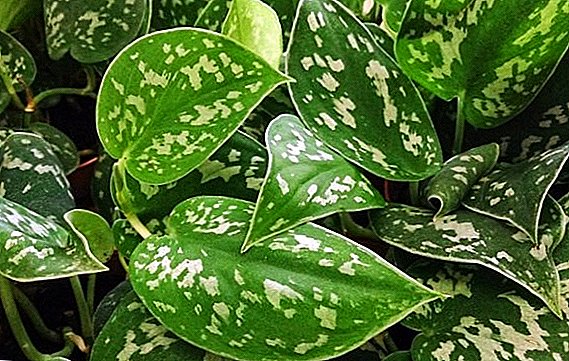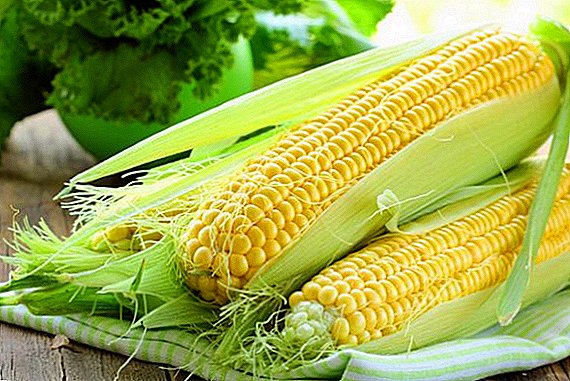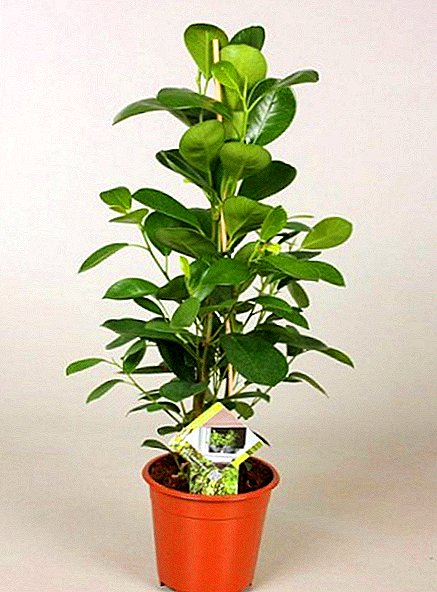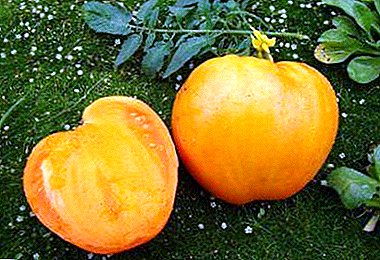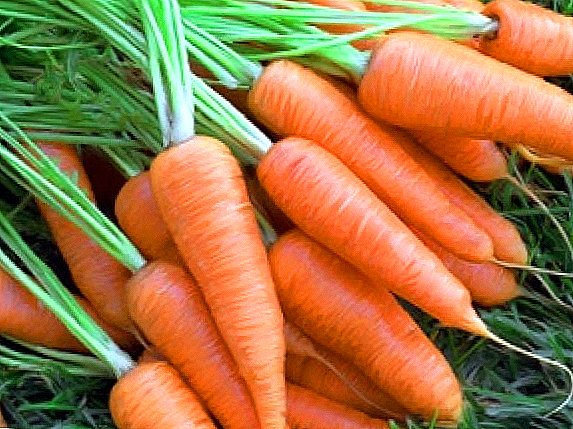
Carrot, which we are accustomed to use in culinary use, in science is called "Carrot sown."
This is a subspecies of wild carrot, a two-year-old plant.
Almost 4000 years ago, carrots were first cultivated and used for food.
Since then, this root crop has become an integral part of most dishes that are prepared in domestic cuisines.
Carrots have long been grown for industrial purposes, and the yield can be compared with our favorite vegetable - potatoes.
In this root crop, both great taste and a large amount of useful substances are combined, such as carotene, vitamins B, PP, K, C and many other trace elements necessary for humans.

There are two options for planting carrots - in spring or autumn. Both options are quite convenient and simple, but the autumn planting requires considerable effort in the search for a suitable place and the protection of freshly sown seeds from winter frosts.
When planting in autumn, you will have to think about choosing the right place, since it should be where there are no drafts, and also there are no deviations from the total soil surface. Such difficulties during spring planting will not arise, since during this period temperature fluctuations will be much less dangerous for the seeds.
During the spring cultivation of carrots, it is necessary to allocate a sunny place for a bed where potatoes, tomatoes, onions, peas or cabbage were previously grown.
You can not dropping seeds where parsley or sorrel used to grow.
As for the best time for planting, it is desirable to focus on the second half of spring. If you are dealing with early varieties of carrots, then from the first half of April you can plant this root vegetable.
Basically, it all depends on the regional climate, so you should carefully monitor the temperature outside. Carrots are cold-resistant culture, because its seeds will sprout even at + 4 ... + 6 ° С, but not at frosts of -4 ° С.

If you want to plant carrots in the spring, then the land for this procedure should be prepared in the fall. That is, you need to be good dig a plotwhile making both organic and mineral fertilizers.
About 10 g of urea, 30 g of superphosphate and 15 g of potassium salt should be approximately per unit area. What cannot be used is fresh manure, since the fruits will be strongly modified, namely, branch.
You should also be careful with the amount of nitrogen, as these roots are able to accumulate nitrates. So carrots will be more poison than a useful vegetable. As organic fertilizer recommended use humus, peat and wood ash.
The beds are also desirable to prepare in the fall, then in the spring they will need to be slightly refreshed by loosening. Between adjacent beds should be at least 20 cm interval.
Presowing carrot seed preparation is not in growing seedlings, but in soaking and hardening. Before you fill all the seeds with water, they need to be rubbed between the palms in order to remove the villi that cover all the seeds.
When this procedure is done, you can put the seeds in the water room temperature for at least 24 hours. As soon as the water becomes cloudy, it will need to be changed, and so this action should be repeated about 5 - 6 times until the water becomes clear.
It is also allowed to use trace elements, namely their solution, in which seeds should be dipped. When the planting material is swollen, it will need to be dried to a friable state and powdered with chalk in order to make them more visible.
In order to obtain persistent seedlings and early harvest, the seeds can be hardened, namely left to be put in a place with a temperature of 0 ° C before they swell completely.
As growth stimulants, gardeners often use moist non-sour peat, which is mixed with seeds and placed in heat for 7 days. In this case, you need to monitor the moisture content of the mixture and the degree of its looseness, so that oxygen is evenly supplied to all seeds. Sowing such seeds should be carried out with peat.

There are several ways to plant carrot seeds.
The first, and simplest, is simple sowing of swollen, soaked sunflower seeds in furrows in the garden beds.
The second method is tape sowing. To do this, you can buy ready-made seeds on a paper ribbon, or you can independently glue the seeds to paper with starch-based glue.
With such planting, the ground must be thoroughly moistened, since the seeds on the ribbons cannot be soaked beforehand. The interval between adjacent seeds should be about 4 to 5 cm. There is one drawback with this method - such seeds will germinate longer than usual.
Also available are granulated seed. These are granules, inside of which there is a living carrot seed. Around the seed form a shell of a special gel, which will swell in contact with moisture.
Such seeds will be provided with nutrients for a long time, and therefore germinate faster. The depth of planting material for any method of landing should be no more than 2 to 3 cm.
At the end of sowing, the land will need to be covered with organic mulch and lightly watered. It is very important that a thick earth crust does not form on the surface of the soil, which will obstruct the access of oxygen to the seeds.
The secrets of carrot care
- Watering
- Top dressing
- Weeding
- Protection

The most important aspect in watering carrots is maintaining uniform soil moisture throughout the entire growth period.
This does not mean that the water on the bed should be poured evenly. You just need to maintain regularity in the introduction of moisture into the ground, so that the fruits do not suffer from violations of water balance.
You can not fill the bedsif you have not watered it for a long time, because the fruits will only suffer from it - they will crack and fall ill.
If the weather is dry outside, then 3 irrigations per week with half a bucket per square meter will be enough. If it rains heavily on the street, then such natural watering will be enough.
The longer the plants are in the ground, the more water they will need. Therefore, as soon as the middle of the whole ripening period comes, the frequency should be reduced to 1 time per week, and the volume should be increased to 1 bucket per square meter.
If before the onset of the technical maturity of the fruits, there are about 3 to 4 weeks left, then 2 buckets of water should be spent per unit area of the beds.
It is also interesting to read about growing asparagus.

Subject to the application of fertilizers during autumn soil preparation, a good harvest can be obtained without applying fertilizers during cultivation. But 2 - 3 feeding for the entire growing season will only benefit, if, of course, proportions have been observed.
For the first time, plants can be fed a month after the seed germination. Then you will need to mix 1 tablespoon of nitrophoska with 10 liters of water and pour carrots with this mixture.
The second feeding is possible only 2 weeks after the first. The third fertilization procedure should coincide with the first days of August.
Then usually make potassium, which will make the fruit sweeter, as well as accelerate the process of their ripening. The best option is adding infusion of wood ash to the water for irrigation. But this can be done only with the onset of the second stage of vegetation.

Thinning and weeding play a very important role in the matter of growing carrots, since the plants that are too thick grow and prevent each other from growing.
In addition, weeds growing in a garden can also take vitality from root crops.
When each plant will have 1 - 2 leaves, the stunted bushes will need to be removed.
It is necessary to repeat this procedure when the length of the tops reaches 10 cm. In order to pull out the plants better, the bed should be watered with plenty of water.
Weeding consists in the usual removal of weeds.

The most common pests of carrots are carrot patch leaf, aphid and carrot fly.
These insects can significantly spoil the crop, so the plants need to be carefully protected from their effects.
Preparations for the treatment can be found in any agricultural store. Chemicals should be used extremely carefully, following the instructions.
Even if you are a novice gardener, the carrot will become one of the basic steps of your experience in growing different crops.
It is difficult to make mistakes in the cultivation of carrots, and especially if all the information is detailed above. Get out and do not be shy. Good luck.


